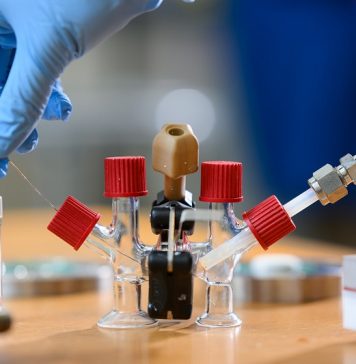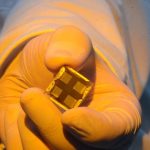The 45-hour myth: Why teens need even more driving practice
A new study from the Virginia Tech Transportation Institute has found that teen drivers who spend more time practicing behind the wheel are significantly...
New hydrogen system could power 100-passenger aircraft
In a major step toward zero-emission aviation, researchers at the FAMU-FSU College of Engineering have developed a new way to store and deliver liquid...
Chilling out your chips: How cold could be the future of computing
Today’s computer chips use a lot of energy and generate a great deal of heat.
Cooling them down with fans or liquid systems helps, but...
Your phone could help cut your electricity bill—here’s how
Would you change when you use electricity if your phone warned you that prices would spike tomorrow?
Research shows that many people would—and that doing...
AI learns to see like humans without being taught
Can machines ever see the world like humans do?
New research suggests the answer may be yes.
A team of scientists from the University of Osaka...
New elastic metal could make heating and cooling greener and more efficient
Scientists at the Hong Kong University of Science and Technology (HKUST) have created a special metal that could revolutionize the way we heat and...
Cyborg jellyfish could be the future of ocean exploration
Jellyfish might not look like advanced swimmers, but they can glide long distances in the ocean while using very little energy.
They don’t have bones...
This new coating makes lithium-metal batteries safer and longer-lasting
Scientists have developed a new way to make lithium-metal batteries (LMBs) safer and last much longer—an important step toward better electric vehicles and energy...
Can data centers be good neighbors? New noise solutions may help
As artificial intelligence, online shopping, and cloud storage continue to grow, data centers are popping up all over the country.
These large buildings house computer...
A simple twist makes solar panels last much longer
Perovskite solar cells are a new type of solar technology that’s lightweight, flexible, and affordable.
They can be used in creative ways, like in windows,...
Tiny 3D-printed tool helps scientists build complex human tissues in the lab
Scientists at the University of Washington and UW Medicine have created a tiny 3D-printed device that could change the way human tissues are modeled...
Scientists use TV tech to supercharge diamond sensors in cells
Scientists have figured out how to make tiny diamond sensors work better inside living cells—using an idea borrowed from high-definition television technology.
This breakthrough could...
FEATURED
New phase-changing material can regulate temperatures inside buildings
Changing climate patterns have left millions of people vulnerable to weather extremes.
As temperature fluctuations become more commonplace around the world, conventional power-guzzling cooling and...
Scientists develop durable material for flexible artificial muscles
Scientists develop a new material and manufacturing process for creating artificial muscles that are stronger and more flexible than their biological counterparts.
“Creating an artificial...
Scientists revolutionize robotics with plant-inspired liquid metals
In the ever-evolving world of robotics, a groundbreaking discovery has been made by a team of dedicated researchers.
Professors Tian Xingyou and Zhang Xian from...
Invisible light sends the Internet across Eindhoven at record speed
In a major tech breakthrough, researchers in Eindhoven have used invisible light to send data wirelessly across the city at an incredibly fast speed.
A...
New finding could improve human-robot collaboration in factories
In a new study, researchers try to figure out how robots will interact with human co-workers in factories of the future.
The study is conducted...





















